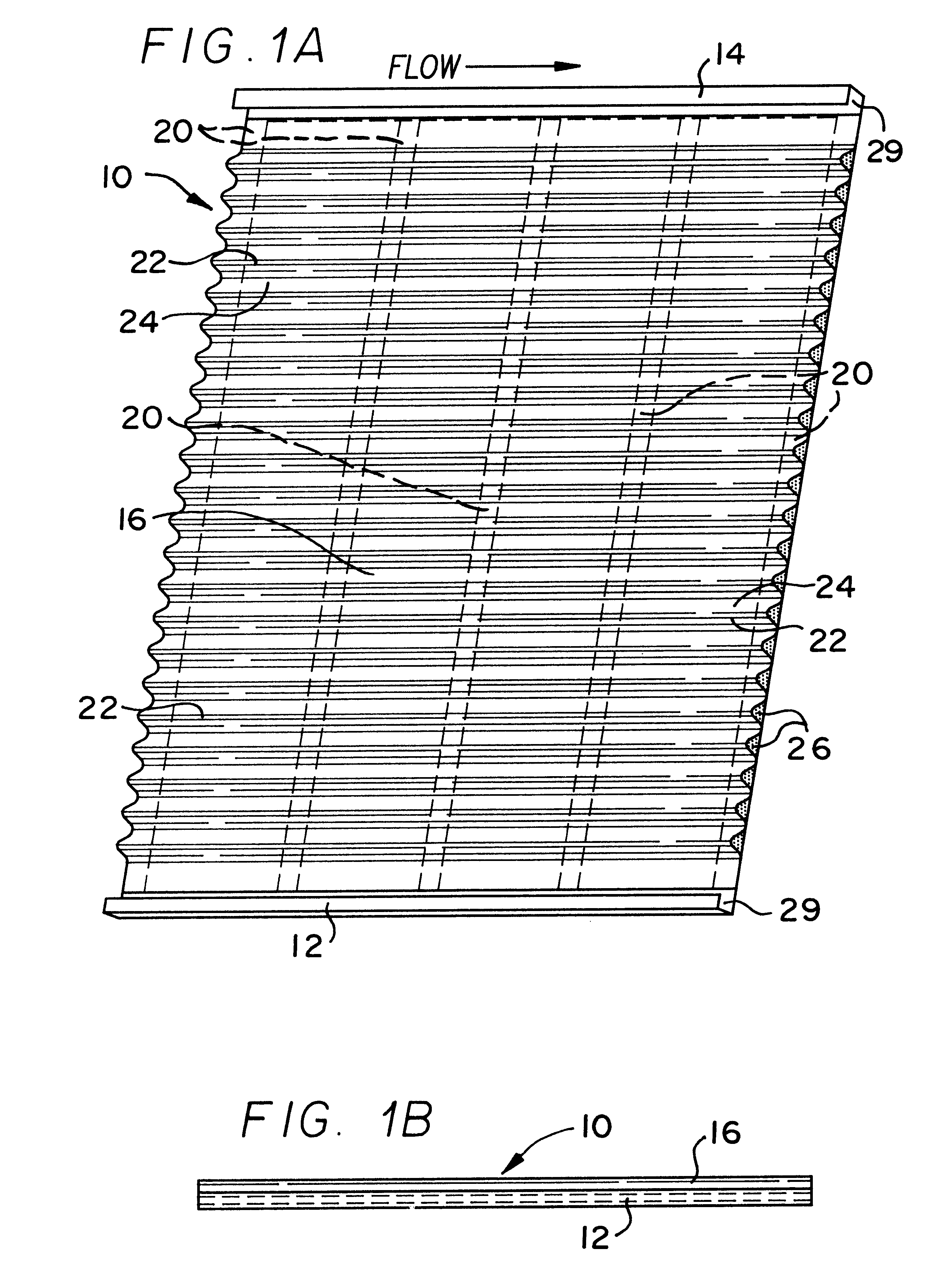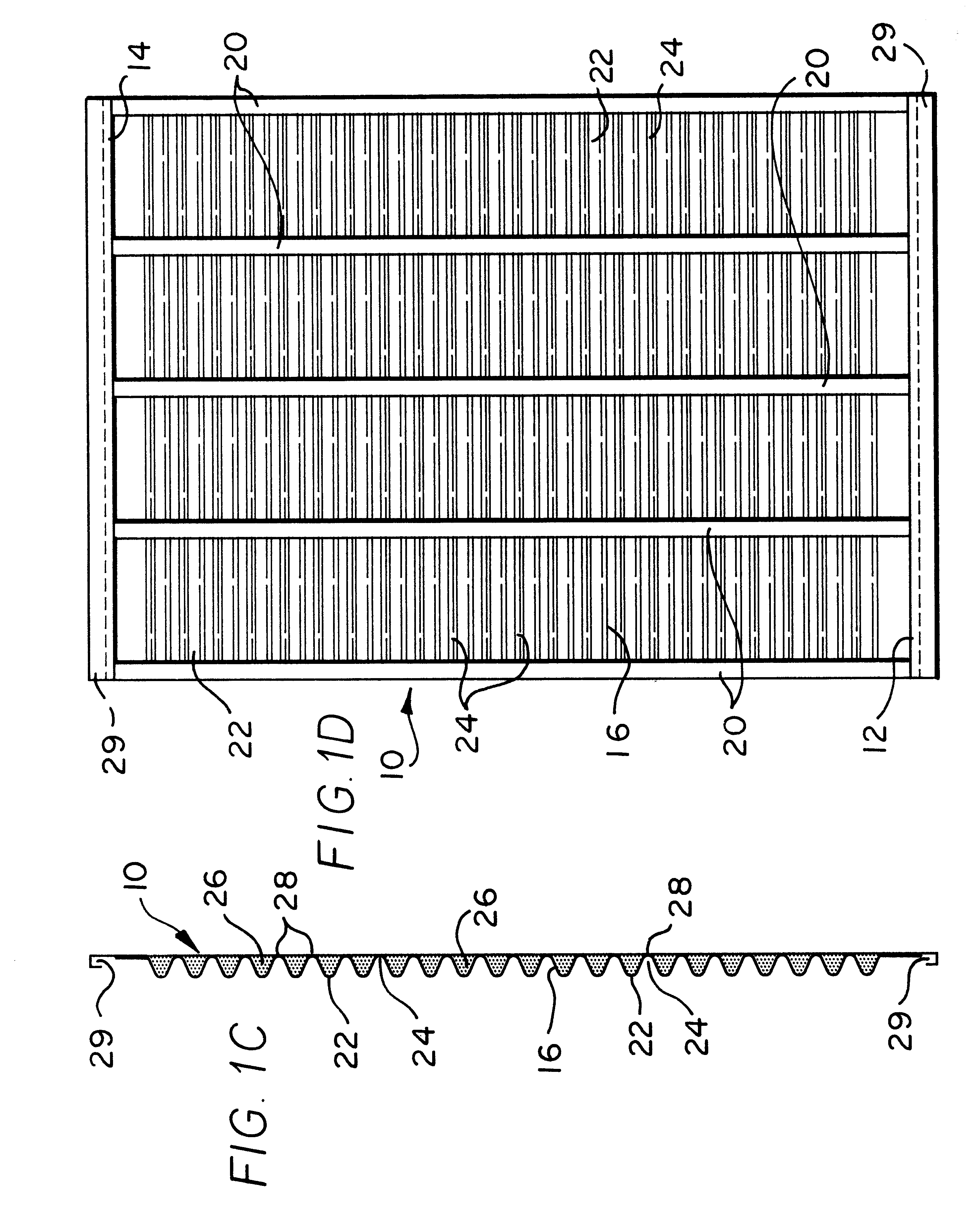Screen apparatus for vibratory separator
a vibratory separator and vibratory screen technology, applied in the direction of filtration separation, separation process, well accessories, etc., can solve the problems of increasing the wear of mud pumps and other mechanical equipment used for drilling, increasing the cost of shipping, and increasing the weight of mud pumps, so as to facilitate insertion into the opening, maximize the effective or useful surface area of the screen, and repair quick and easy
- Summary
- Abstract
- Description
- Claims
- Application Information
AI Technical Summary
Benefits of technology
Problems solved by technology
Method used
Image
Examples
Embodiment Construction
FIG. 1A shows a screen 10 according to the present invention with a frame with two sides 12 and 14 with strips 20 extending between the two sides 12 and 14; and screen material 16 on the strips 20 and connected to the sides 12 and 14. Screen material 16 (and any other screen or screening material disclosed herein) represents any known mesh, screen, or screens, used in any combination, bonded together or unbonded. The screen material 16 as shown is "three-dimensional," i.e., not generally flat and has undulating portions with hills 22 (as seen in FIGS. 1A-1C) and valleys 24. (It is within the scope of this invention for the screening material 16 and any other screening material herein to be generally flat.)
Plugs 26 may plug ends of the hills 22. Incorporated fully herein by reference is the disclosure of co-owned pending U.S. Application Ser. No. 08 / 282,983 filed on Jul. 29, 1994 entitled "Shale Shaker Screens" which discloses three-dimensional screens with plugged ends.
In the screen...
PUM
| Property | Measurement | Unit |
|---|---|---|
| width | aaaaa | aaaaa |
| thick | aaaaa | aaaaa |
| thick | aaaaa | aaaaa |
Abstract
Description
Claims
Application Information
 Login to View More
Login to View More - R&D
- Intellectual Property
- Life Sciences
- Materials
- Tech Scout
- Unparalleled Data Quality
- Higher Quality Content
- 60% Fewer Hallucinations
Browse by: Latest US Patents, China's latest patents, Technical Efficacy Thesaurus, Application Domain, Technology Topic, Popular Technical Reports.
© 2025 PatSnap. All rights reserved.Legal|Privacy policy|Modern Slavery Act Transparency Statement|Sitemap|About US| Contact US: help@patsnap.com



